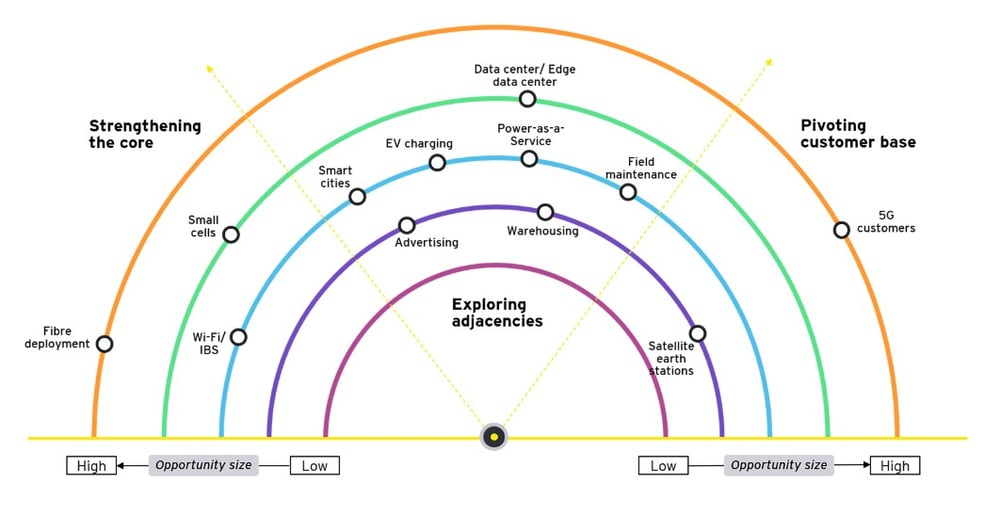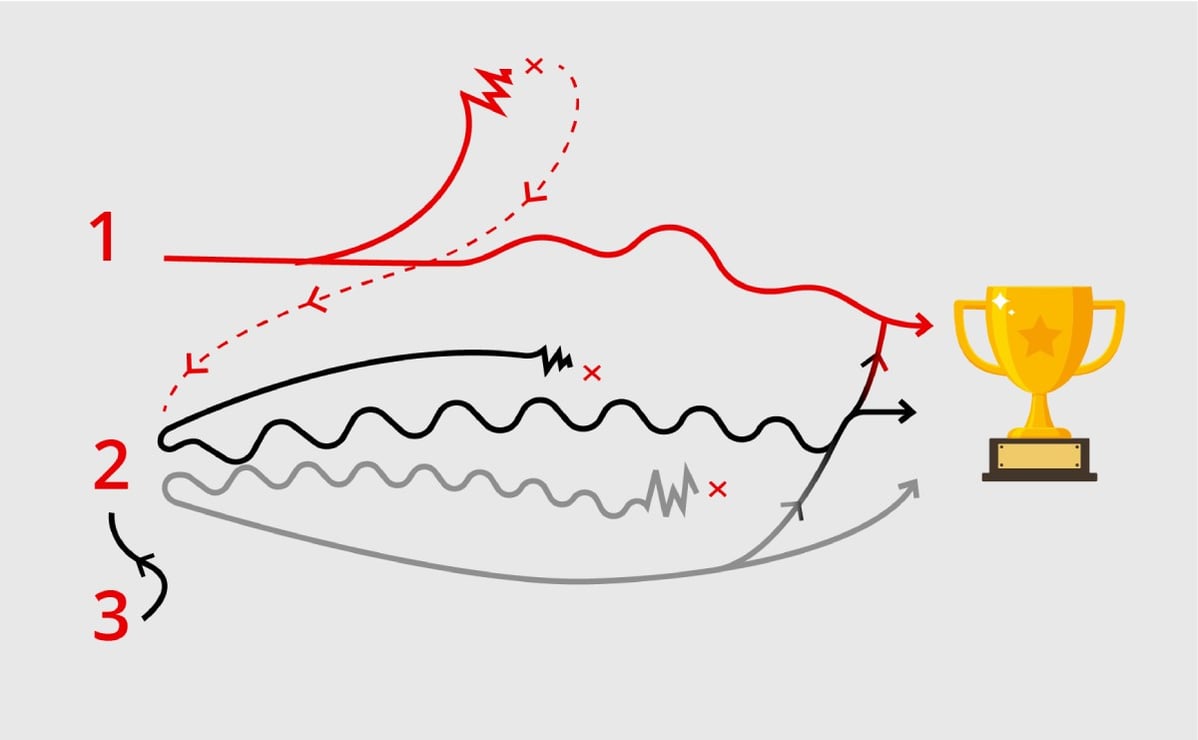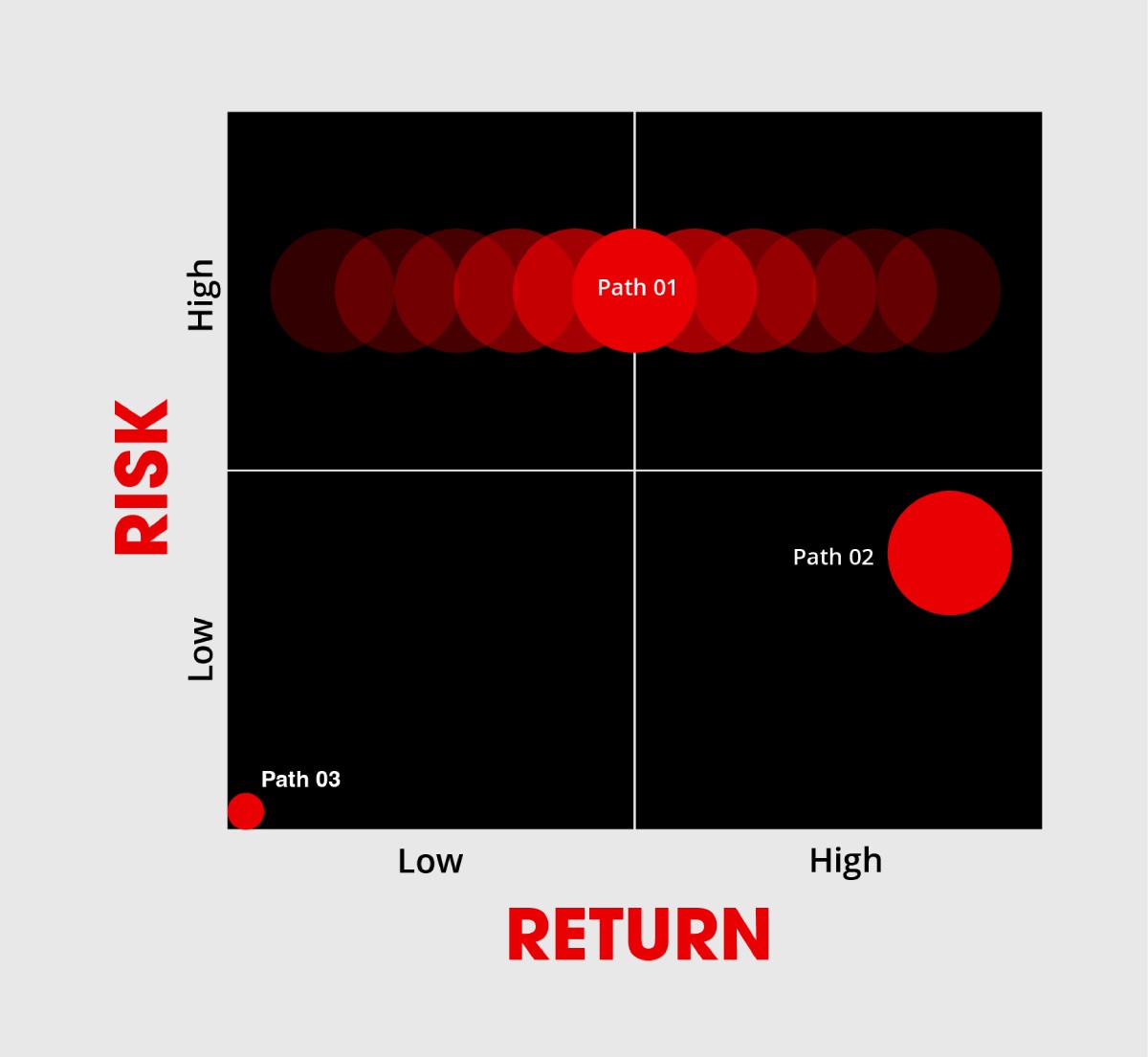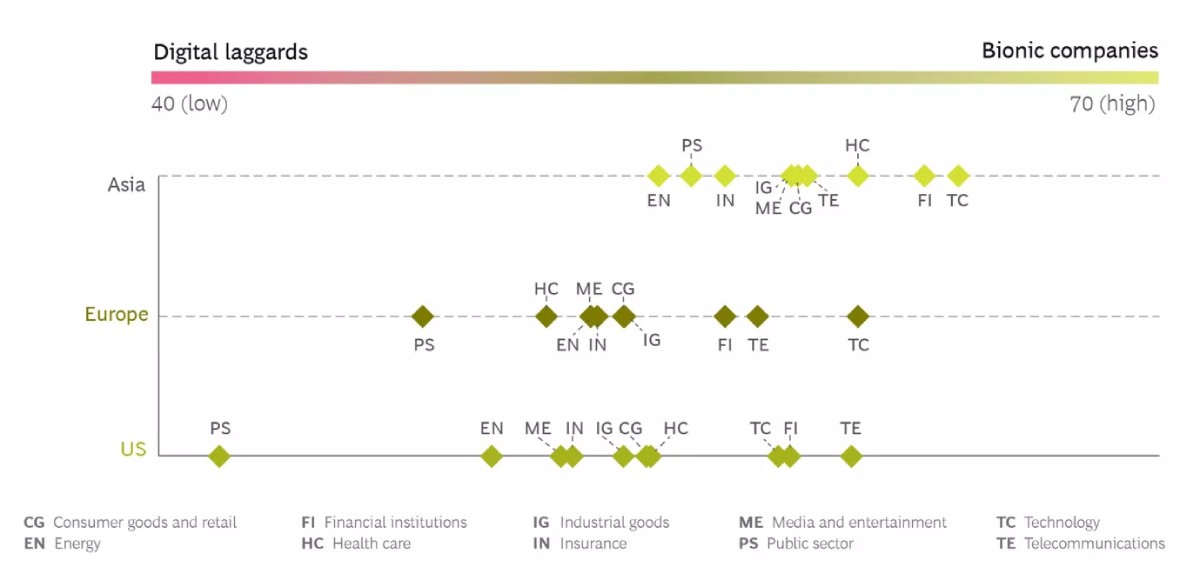Towerco to Digital Infraco and beyond… the digitalization journey pings
The general business environment has been challenging for the last two years.
Inflation has pervaded economies worldwide, extending possibly beyond network coverage areas. Major economies have grappled with issues such as price increases, weak consumer demand, declining corporate margins, and supply chain disruptions. Consequently, towercos have returned to fundamental principles by optimizing operations to reduce costs and enhance efficiency.
However, these companies must also explore opportunities beyond cost-cutting measures - 5G, preparing for the forthcoming advancements of 6G networks, digital twins, and increasing revenue opportunities while adapting to new business models in an ever-evolving digital landscape. Traditionally managing passive infrastructure, towercos now recognize the need for embracing digitalization as a strategic approach due to pressures from many directions - markets, internal, and technology.
This blog post examines the driving forces behind digitalization for towercos while outlining potential paths they can pursue. Furthermore, it offers ideas to facilitate this growth without falling behind industry progress towards continuous improvement.
Digitalization Drivers
For towercos, the question on digitalization isn’t why, but when? Digitalization is driving rapid changes in the industry. Towercos are finding new and innovative ways to make their operations more efficient and cost-effective. It isn’t difficult to identify and acknowledge the drivers.
The Market Imperative
An EY report titled “Digital InfraCo – unlocking the tower power” captures in fantastic detail the widespread market opportunities towercos should be pursuing. Sooner or later, towercos will be encouraged (read compelled) to explore the following opportunities. The EY report presents the opportunity radar as under.

Source: EY report “Digital InfraCo – unlocking the tower power”
- Strengthening the core: Continuous and increased demand for high-speed high bandwidth traffic seems a given. The 5G rollout across the world is calling for network densification via small cells to support high-capacity data applications. For this, a robust fibre backhaul network is a prerequisite. Towercos are well positioned to address the fiber opportunity as a one stop solution for all last mile fiber requirements addressing challenges like Right-of-Way (RoW), deployment issues and site access.
- Adjacencies: Infrastructure is the strength of any towerco - widespread tower network that extends to a number of pincodes, real estate expertise, power management capabilities, experience workforce, and a streamlined process. All can prove to be strong assets to deliver more revenue opportunities through adjacent service offerings. This includes but is not confined to EV Charging, warehousing, advertising, and a plethora of other things. Managing such a diverse bouquet of adjacent services manually would be inefficient. Towercos would be served well if they proactively take a digital-first approach to adjacent services.
- The Digital InfraCo: The Digital InfraCo opportunity is perhaps the most audacious idea for towercos. A towerco becoming a Digital InfraCo is akin to metamorphosis when a caterpillar transforms into a butterfly. Here is why. A towerco stops at providing tower infrastructure to telcos. But, Digital infracos will go one step further and become the network provider. The transformation into a digital infraco is to move from a ‘shared infrastructure’ model to a shared infrastructure provider model. A digital infraco will avoid duplication and drive better economies of scale. Digital maturity of existing incumbents would determine their successful transformation from towerco to digital infraco.
Internal Impetus
Numerous internal factors drive digitalization within TowerCos. Firstly, some of these companies have already embarked on digital transformation initiatives, prompting others to follow suit. The competitive landscape among TowerCos further fuels the adoption of digitalization as organizations strive to keep pace with one another. Another significant driver is the consolidation in the TowerCo industry due to a series of mergers and acquisitions. Digital maturity in operations and business processes facilitates smoother due diligence and expedites merger or acquisition proceedings.
Additionally, changes within the telecom sector impact TowerCos' approach to digitalization. Previously characterized by numerous competitors, recent consolidation has left only two or three major players per market. Consequently, there are fewer customers for TowerCos; thus, they must adapt their strategies accordingly. As telecom companies increasingly prioritize becoming "digital first" through technologies such as data-driven business intelligence, AI, machine learning, and generative AI like chat GPTs, this bandwagon effect compels TowerCos not only to take digitalization seriously but also to embrace it as an integral aspect of their operations.
Technology Suppliers
The Towerco industry is a sizable market for tech suppliers in the field of cloud computing, big data analytics, artificial intelligence (AI), machine learning, automation, and the Internet of Things (IoT). In addition to the sales and marketing push from tech suppliers, even third-party analysts have contributed to market making. Thus, tech suppliers have become an essential part of the towercos growth strategy, providing a range of digital solutions to help them stay competitive. In addition to co-creating tech solutions, technology suppliers also offer GTM (Go-to-Market) strategies which can enable towercos to differentiate themselves from the competition. It is becoming a win-win.
Digitalization - Various Journeys
Towercos are increasingly looking to digitalization as a way to drive efficiency and profitability. The digitization initiative begins with understanding the drivers for such an initiative, which include improved customer service, enhanced operational efficiencies, increased agility in responding to market needs, fighting off competition, and better data management capabilities. Digitalization helps towercos improve asset utilization rates, optimize operations, and reduce costs associated with maintenance by leveraging technologies such as predictive analytics and artificial intelligence (AI). In addition, digitalization enables towercos to provide more robust services by developing new applications that leverage current technology trends such as 5G networks and IoT solutions.
Towercos can take a number of paths in multiple combinations as they embark on the digitalization journey. But first, let’s fix the distinction between digitalization and digitization.
Digitization and digitalization are two related but distinct concepts that are often confused or used interchangeably. Digitization is about converting information, while digitalization is about transforming processes. Digitization is the process of converting analog information (audio recordings, photographs, documents) into digital formats, which can then be easily stored and manipulated. For example, scanning a paper document like a lease agreement and converting it to a PDF file is an act of digitization and so is creating a digital twin of a tower through photos, videos, or photogrammetry data. Digitization makes information more easily accessible, storable, maintained, and shareable. Digitalization, on the other hand, is the use of digital technologies to transform business and organizational processes. It involves leveraging data in digital formats to enable automation and enhanced performance. This can be done through AI-based systems, cloud computing, the Internet of Things (IoT), big data analytics, and other digital solutions. Both of these terms are essential for businesses looking to maximize their operations in a modern digital environment. Digitization is part of a larger digitalization process.
The paths Towercos can take in their journey are as under.

Path 1 - Big Bang Digital Transformation
This path towards digitalization is the most demanding on a towerco. In this path, it isn’t just the business function of tower infrastructure and associated operations that are being technology-enabled. All functions across business and support services including administration are brought under the digital transformation umbrella. Essentially, a towerco goes “all-in” with this path.
Path 2 - Digitalization > Point Solution or Platform
This path can have two sub-paths.
- A point solution approach
- A platform approach
Point solutions are types of software that help solve specific problems. A platform is a set of tools and services that can be used to develop, manage and deliver point solutions. Point solutions and platforms work together, sometimes via integrations. The platform provides the necessary infrastructure for point solutions to run, and the point solutions provide specific functions that automate processes and provide a better user experience.
In the context of telecom site management software, a point solution could be just a lease management software or a field service management app. A platform approach, on the other hand, would provide centralized site lifecycle management from lease management to field force to analytics. The platform approach could deploy multiple-point solutions (Location, Site Inventory, Tower Acquisition, O&M, Billing) helping create a more unified user experience. This integrated approach improves executive decision-making thanks to smarter data and faster analysis.
Path 3 - Digitization
Not just towercos, but even companies in other industries that are getting disrupted by technology, tend to confuse digitization with digitalization. The distinction between the two has already been highlighted. However, digitization is a good first step for towercos to develop the confidence to invest in future digitalization initiatives including digital transformation.
Risk vs Return
The risk-return matrix for each of the paths is showcased in the following exhibit. The “all-in” Path 1 approach bears the maximum risk since it takes maximum resources in terms of time and money. Path 2 is an evidence-based agile approach that takes calculated risks to solve point problems one at a time. Risk is low since only a part of the overall business is undertaking the change.

Stay the course
Once the towercos embark on the digitalization journey, the stakes would only get higher. Towercos will have to continuously improve and reinvent. Towercos should be prepared to adopt new business models and shed outdated operating methods. Towercos should map their progress using digital maturity frameworks to stay the course and win. BCG, the global management consulting firm, offers a rough framework.
Assess Digital Maturity with DAI
BCG conducts an annual Digital Acceleration Index (DAI) study. It is a global survey of thousands of companies across many industries. We are referencing their 2021 study to open up some ideas. (Please note that this isn’t a recommendation, but a line of thought, on which towercos are encouraged to build). The 2021 survey covered 2,300 companies in 27 countries across 10 industries. The companies surveyed were asked to estimate their digital maturity on a scale of 1 to 4 in 36 categories. The scores were normalized on a scale of 0 to 100 to place them on the BCG Digital Acceleration Index (DAI). Here is the exhibit.

Source: BCG’s Digital Acceleration Index Study, 2021
The DAI then went on to classify companies into three categories based on their digital maturity.
- Bionic Companies (Score: 67 to 100) - Pinnacle of digital maturity, excelling in technology, customer experiences, and innovation.
- Digitally Proficient Companies (Score: 44 to 66) - Making progress, investing in digital capabilities, aiming for improvement.
- Digital Laggards (Score: 0 to 43) - Limited digital maturity, facing challenges in leveraging technology for desired outcomes.
It isn’t explicitly mentioned if tower companies were surveyed. But, telecom companies were. And the telecom companies came right at the top. Telecom companies were identified as bionic companies with high digital maturity. Needless to say, these telecom companies are strategic customers of tower companies, for whom the bandwagon effect is real.
Please refer to the self-assessment questions in the table below and score yourself to get a sense of your digital maturity as-is. Based on the assessment, towercos can identify strengths and areas for improvement, and prioritize corresponding digital transformation initiatives. The table provides representative criteria and corresponding questions. Towercos should think through which criteria are the most important for their business situation. This should then be followed up with commensurate weights (in %) so that end scores help make progress in the digital transformation journey.
| Criteria |
Self Assessment Questions |
|---|---|
| Digital Strategy |
Is there a clearly defined digital strategy aligned with your business goals and objectives? |
| Does the strategy outline a vision, targets, and a roadmap for digital transformation? |
|
| Leadership and Culture |
Is there strong support and commitment from senior leadership for driving digital initiatives? |
| Is there a digital culture that encourages innovation and empowers employees to embrace digital technologies? |
|
| Technology Infrastructure |
Is the technology infrastructure scalable, flexible, and secure enough? |
| Are digital systems, platforms, and tools integrated with AI being explored within the organization? |
|
| Data Management |
Are robust data management practices in place, including asset and site data collection, storage, and governance? |
| Are intelligent data analytics capabilities utilized effectively to drive insights and decision-making? |
|
| Customer Experience |
Is there a focus on delivering exceptional digital experiences to MNOs? |
| Are digital touchpoints, personalized services, and customer engagement strategies well-implemented across channels? |
|
| Talent and Skills |
Is there a strategy for attracting, developing, and retaining digital talent? |
| Are employees provided with digital upskilling and training opportunities? |
|
| Partnerships and Ecosystem |
Are there strategic partnerships with technology vendors, startups, or industry collaborations? |
| Are partnerships leveraged to drive innovation and access new technologies? |
|
| Performance Metrics |
Are relevant KPIs established and tracked to measure the effectiveness of digital initiatives? |
| Are metrics aligned with business objectives and regularly reviewed? |
|
| Innovation and Experimentation |
Is there a culture of innovation that encourages experimentation with emerging technologies? |
| Are new technologies piloted and evaluated using a fail-fast mindset? |
|
| Customer Feedback and Market Perception |
Is customer feedback actively sought and used to improve digital offerings? |
| Are market research and sentiment analysis conducted to gauge market perception? |
Press the 4 Accelerators
The BCG study has identified four accelerators that help companies keep getting better in their digital maturity. Most digitally mature companies have blazed a trail in operational efficiency, stakeholder value creation, top-line growth, and sustainable business practices. With these accelerators, tower companies can enhance their digital maturity and drive value creation.
1) Investing in Technology, Data, and Human Capabilities
- Analyze self-assessment results to identify strengths and areas for improvement in technology, data, and human capabilities.
- Create a roadmap for investing in technology, modernizing applications, and improving data quality and accessibility.
- Emphasize the importance of upskilling employees and enhancing digital skills.
- Promote the adoption of a unified data model and API integration for improved efficiency.
2) Putting AI at the Core of Towercos’ Digital Transformation
- Assess current AI investment and focus based on self-assessment results.
- Highlight the benefits of integrating AI into digital transformation efforts.
- Emphasize the impact of training employees in AI on achieving key outcomes and driving growth.
- Encourage prioritizing AI initiatives and allocating appropriate resources.
3) Establishing Governance and Platform Operating Model
- Evaluate governance structure and assign ownership for digital initiatives.
- Explain the benefits of a platform operating model for cross-functional collaboration and autonomy.
- Strengthen collaboration between business units and technology functions.
- Ensure effective execution of digital initiatives.
4) Connecting Technology and Human Capabilities
- Assess culture and integration of technology and data into operations.
- Promote a culture of continuous improvement and human-tech augmentation (HTA).
- Encourage progression from manual work to automation and optimization.
- Leverage technology to automate processes and foster innovation and design.
It is crucial to monitor progress, regularly reassess digital capabilities, and adjust strategies as needed to stay competitive in the ever-evolving digital landscape.
Shifting Gears in Telecommunication
In the world of telecommunications, the circle of life continues to spin with intrigue. It all began with telcos, pioneers in constructing and managing their own network infrastructure, including those towering structures that connect us all. However, as the industry moved forward, a new player emerged on the stage: the towerco. These towercos, like nimble performers, specialize in managing and leasing out tower infrastructure. They take center stage, allowing telecom companies to refocus on their core services while entrusting the towers to the experts.
But the show must go on. Enter the infracos, the latest stars of the telecom spectacle. They take the towerco model and elevate it to new heights. Infracos not only provide tower infrastructure but also spread their wings as network provider themselves. This transformation is made possible ONLY by End-to-End DIGITALIZATION, enabling them to offer a comprehensive solution and become key players in the telecom ecosystem.
Yet, the circle of life reminds us that the story never remains the same. There's a possibility for infracos to return to their roots, blending back into the telcos from which they emerged, realizing that sometimes the whole can be less than the sum of its parts. Alternatively, they might evolve into sophisticated technology behemoths, exploring new frontiers beyond the traditional telecom realm. Factors such as regulatory changes, market dynamics, and, most importantly, technological advancements will drive these twists and turns. But one thing is certain. Only the DIGITALLY FORWARD will survive. Ones that can adapt and thrive in the face of constant transformation.
The telecom industry will keep us captivated with its ever-changing dynamics. It's a mesmerizing performance that teaches us the importance of adaptation and seizing opportunities to stay ahead of the curve.

